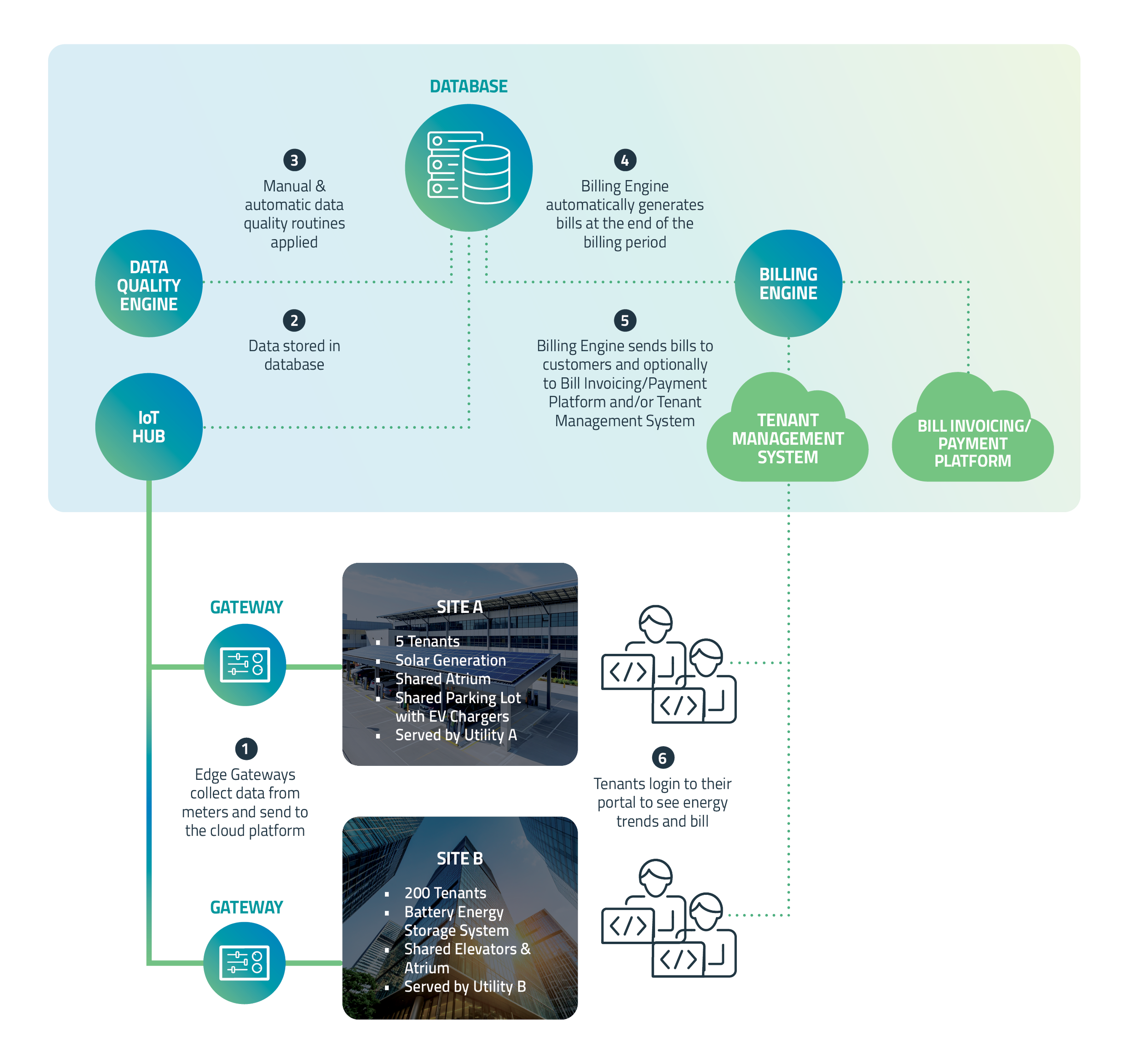
UTILITY BILL MANAGEMENT
Turning Energy Data into Business Value
Modern Energy Management Systems (EMS) contain a billing engine that can apply utility tariffs to energy data. But these billing engines do more than just generate a utility bill — they transform raw data into financial intelligence, helping organizations create potential revenue streams, recover costs, and drive accountability.
For Commercial, Industrial & Institutional facilities, it’s about making your energy data actionable, traceable, and ultimately, valuable to your customers and business stakeholders. Let’s review the main applications for a billing engine, noting that they can be applied not just to electrical services but also water, air, gas and steam.
Bill Verification
With Bill Verification, an Energy Management System (EMS) generates a “shadow bill” and then compares it to the actual utility bill. Any discrepancies between the two bills can lead to cost recovery, improved accountability, and more informed negotiations with utility providers.
Utility bills for large consumers are complex documents with many determinants. The data acquisition systems and billing engines that utilities use to calculate bills are typically older platforms and can be difficult to maintain and error-prone in some cases, especially when adapting for onsite generation.
While Bill Verification is commonly associated with electricity, it extends to other utilities as well. The same principles and scrutiny can be applied to bills for water, air, gas, and steam.
Bill Verification ensures that organizations are only paying for what they actually consume, and that all rate structures and charges are applied correctly.
Tenant Billing
Tenant billing is used in multi-tenant facilities to allocate and charge each tenant for their share of utility consumption, whether electricity, water and gas. The purpose is to ensure that tenants are billed for their actual contribution to the primary utility bill, rather than simply dividing utility costs evenly or folding them into rent. This approach not only supports cost recovery for landlords and property managers but can also drive tenant satisfaction, as individuals and businesses see a direct link between their usage and what they pay. providing a platform to incentivize efficiency upgrades—such as energy-efficient appliances or lighting—by making the benefits of lower consumption directly visible on their bills.
Beyond straightforward cost recovery, Tenant Billing can serve as a tool for revenue generation, particularly in jurisdictions that allow for mark-ups or administrative fees on utility charges. Property owners may be permitted to add a reasonable margin or service fee to utility pass-throughs, helping to offset administrative overhead or even generate additional profit streams.
EMS-based Tenant Billing typically requires integration with tenant management systems and accounting software for a seamless tenant experience. With an EMS, property managers are also able to provide value-added features such as a portal to view historical and real-time energy performance.
Cost Allocation
Cost allocation, particularly through Activity-Based Costing (ABC), is a method that assigns costs to specific activities or processes, providing a more accurate picture of how resources are consumed within an organization. Applying ABC to energy management enables organizations to track actual energy use across different departments, equipment, or activities, rather than relying on estimates or averages.
An EMS billing engine, with appropriate sub-metering, collects energy data, applies allocation rules, and calculated accurate costs for each cost center or user group. This allows organizations to identify inefficiencies, optimize energy usage, and fairly distribute costs according to actual consumption patterns, supporting more informed decision-making and promoting accountability across the business.
There is an important difference between cost allocation and tenant billing. Cost allocation is a cost-recovery mechanism, whereas tenant billing can be used as a revenue stream.
How Utility Billing Works
The diagram below illustrates how billing works within an EMS. A billing engine works as part of the overall system to deliver value. Keep in mind that while this example is for electrical energy, the same approach applies for water, air, gas, steam and any utility-oriented service.
Note that the billing engine is not a invoicing or payment platform, but it integrates with them, as the diagram shows.
Billing is Complex
There are several factors that complicate the process of creating bills for verification, tenant billing and cost allocation.
Complex Energy Systems
Utility tariffs have long been complex. But today’s rapid innovation in energy systems, driven mainly by distributed energy resources (DERs), adds new levels of complexity:
rapid electrification including EV charging and heating
a mix of traditional and onsite generation such as solar and batteries
exposure to energy markets with dynamic pricing
new utility tariff structures & policies to maintain grid stability
WHAT TO LOOK FOR IN A BILLING SOLUTION
Capable of sub-metering all loads and generation assets, including the ability to measure bi-directional power flow.
A billing engine that that can accurately model utility tariffs including consumption & demand charges, TOU rates, fixed and variable fees, market pricing, power factor penalties and more.
Ability to create utility bills for electrical, gas and water utilities.
Complex Facilities
Facilities are complex systems on their own, often having some or all of these characteristics:
complex spaces with services and assets shared across consumers
multiple tenants, including pop-up tenants and tenants who may occupy multiple buildings with different tariffs.
tenant move in/move out dates that may not align with billing periods
internal department or process boundaries that change frequently
some loads or generation assets may not be metered
WHAT TO LOOK FOR IN A BILLING SOLUTION
Can allocate energy from common areas (eg: atriums) to tenants or departments.
Handles move-in/out dates that don’t align with billing periods.
Supports virtual metering when physical meters are not available.
Able to integrate with Tenant Management Systems and Bill Reconciliation platforms.
Provides a portal to tenants or departments to view their energy performance and bill status.
Data Quality Issues
Data quality refers to the completeness, consistency & accuracy of energy data. Poor data quality causes errors and a results in a lack of trust in the results. There are several causes of poor data quality:
Metering from different vendors may calculate measurements differently. This is common when an EMS monitors multiple buildings or buildings with retrofits where different meter brands are in use
Communications networks may not be robust, resulting in missing or duplicate data from network outages
Contractors may accidentally reconfigure meters or forget to update them after taking them offline for maintenance or testing
Devices may be not be time-synchronized correctly
Data may be corrupt due to unauthorized access
WHAT TO LOOK FOR IN A BILLING SOLUTION
Metering that stores data in onboard databases to prevent data loss during network outages
Ability to automatically post-process data to account for different measurement calculations from meter vendors
Robust time synchronization and event logging capabilities
Strong cybersecurity protection for metering and financial data
A data quality sub-system that allows data to be corrected if missing or incorrect data is detected
The Bottom Line
Billing is complex. A EMS with a powerful billing engine and good data quality capabilities is essential.
Solutions
-
ION Power meters are the most accurate & intelligent power meters available, measuring thousands of power quality and energy variables and transmitting them to the software system.
-
For non-critical loads or circuits, we supply basic meters that provide all the necessary measurements to support energy and electrification management
Electrical Metering
EnergyX® Platform
-
The EnergyX® cloud platform contains all energy management & electrification applications in a single portal, supporting multiple sites, users, languages and time zones.
EnergyX® has a powerful billing engine that can model any bill determinant and generate bills for bill verification, tenant billing and cost allocation.
-
EnergyX® Edge Kits provide onsite monitoring & control and a secure connection to the EnergyX® cloud platform.









